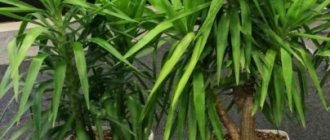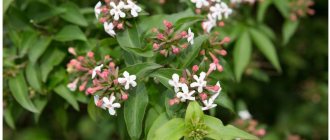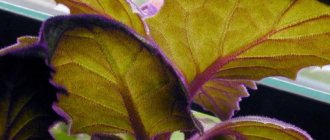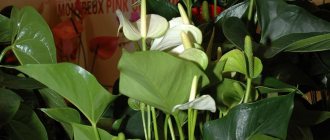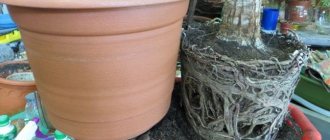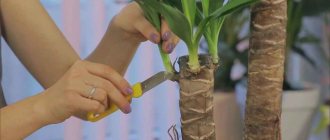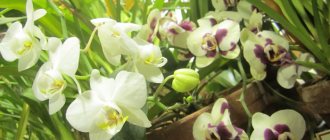Yucca flower description. Photo
Yucca is not a palm tree, although it is very similar to it. Previously, the Yucca genus was classified as a member of the Liliaceae family. Now it is assigned to the agave family. It includes approximately 50 species. They grow wild in Mexico and the southern states of the USA. Yucca garden, like cacti, is an indispensable attribute of the landscape of the Mexican prairies. These are plants accustomed to arid climates and sandy rocky soils.
Their exotic appearance, reminiscent of a palm tree, is given by low-branched stems with plumes of long, sword-shaped leaves. It is to the green lush sheaves on high trunks that yuccas owe their other name - bunch-nosed plants.
The flowers are collected in tall, showy inflorescences. In preparation for flowering, the plant throws out from the center of the leaf rosette powerful, tall (up to two meters), spreading panicles of bell-shaped flowers up to 7 cm long, somewhat reminiscent of huge chestnut inflorescences. The yucca's long, serrated leaf ends in a sharp, single spine. The height of the yucca trunk can reach twelve meters.
There are also stemless varieties that form rosettes of leaves directly on the ground. On yucca trunks, scars from the petioles of dead leaves remain for a long time. The fruit of yucca is a juicy capsule (multi-seeded berry). The plant is pollinated exclusively by yucca moth. Therefore, when propagated in culture, artificial pollination is needed to set seeds.
Description and characteristics
Yucca is a genus of 49 species belonging to the Asparagus family. The taxonomy classifying the plant as an Agave or Liliaceae is outdated.
Distribution area: Caribbean islands, Central and North America, including the Canadian province of Alberta.
What does the plant look like?
All species are evergreen, well adapted to drought, which must be taken into account when planting and caring. They can be divided into two groups:
- The first combines yuccas with such a short trunk that it may seem as if it simply does not exist. A lush rosette of large, hard leaves comes out of the ground, the lower ones come into contact with the ground. The bush occupies a large area if it is not disturbed by the daughter plants forming a dense wide clump.
- At first glance at the second group it may seem that this is a palm tree - yucca looks like a tree. In adult specimens, the cork-covered stem is thick, can be straight or curved, with rare branches. Each shoot is crowned with a tuft of leaves. If the yucca stem breaks off in some place, at least two daughter rosettes usually appear at the top, which is used in the formation of cultivated plants. The lower leaves fall off as they age, leaving clearly visible scars on the trunk.
The yucca rhizome is powerful, thick, branched, vertical, and goes deep into the soil. The leaves are sessile, vaginal, linear or xiphoid, with a sharp tip, often ending in a spine. The edges of the plates can be smooth or jagged, which must be taken into account when caring; be sure to work with gloves.
The color is gray or green; there are many variegated varieties. Yucca leaves are often covered with a matte, waxy coating that prevents moisture loss. The shape of the plates in different species is approximately the same, the size varies from 25 cm to 1 m, width - 1-8 cm.
Bloom
With good care in the open ground, yucca blooms annually. With the onset of warmth, around the end of May - June, a powerful stem with buds emerges from the center of the rosette. The height depends on the type and age of the bush, reaching 0.5-2.5 m. On old yuccas that have not bloomed for the first time, the panicles are well branched and contain up to 300 bell-shaped white or cream corollas.
The peculiarity of the culture is a strong aroma that spreads during flowering, which for some reason is usually compared with the smell of expensive soap.
Even if caring for yucca at home is ideal, there are several specimens on the windowsills and floors, it is not a fact that at least one will ever bloom. In a greenhouse or winter garden, the appearance of a peduncle is possible on old plants.
Yucca at home care
Location
The natural habitat of yucca is characterized by a dry climate and rare but plentiful rains. In nature, yucca is accustomed to bright sun. Young plants are especially demanding of the sun. However, in the microclimate of an apartment, the plant feels uncomfortable in direct sunlight. The best location in the room is east or west windows.
Lighting
The optimal day length for yucca is 16 hours. When there is a shortage of sun, it is illuminated with fluorescent lamps. In summer, the plant benefits from fresh air and sunlight, subject to mandatory protection from dampness and rain. If the yucca spends the summer in a room, be sure to ensure daily ventilation of the room. In winter, the plant especially needs good lighting.
Temperature
In spring and summer, the best temperature for yucca is 20–25 °C. In hot weather it is not recommended to leave it in the open sun. The plant needs shading. To avoid overheating, place the container with yucca in the shade and spray it after cooling. The optimal temperature in winter is 8–12 °C.
How to care for indoor yucca
Lighting and location
Under natural conditions, the plant grows mainly in conditions of low humidity and good light. Therefore, it is necessary to provide her with similar conditions at home. Indoor yucca will feel good and have a luxurious appearance only in a well-lit place. While it is still small, you can put it on the windowsill, protecting it from direct sunlight. When the yucca grows up, it can be placed near a window that provides the maximum amount of light. The plant reacts quite painfully to insufficient light - the leaves stretch out and become frail. Be sure to provide the yucca with a flow of fresh air. But at the same time, protect from drafts. In summer, it is advisable to take it out into the fresh air (balcony, garden plot, etc.).
Temperature
In the warm season, temperature is not particularly important for yucca. Room temperature is quite acceptable for her. She will also tolerate the heat easily. In winter, although yucca does not have a pronounced dormant period, moderate temperatures are desirable (+15 - 18 degrees). During this period, it is able to tolerate lower temperatures. The lower limit for indoor yucca in winter is +8 degrees.
Watering, air humidity, fertilizer
You need to water the yucca very carefully, especially in winter! It will easily tolerate a lack of moisture and short-term dryness of the soil, and it can even die from waterlogging. The watering regime mainly depends on the time of year and air temperature.
In summer and in conditions of high air temperature, water the yucca generously, but only after the top layer of soil in the pot has dried. With the beginning of autumn, watering is gradually reduced. When kept in cool conditions, it is recommended to water indoor yucca only after at least half of the soil has dried out.
Dry air does not cause any particular inconvenience to yucca. Therefore, there is no need for spraying or other methods of air humidification. The only exception can be in winter if the plant is located in close proximity to a heating device. In this case, you can moisten the leaves with warm water once a day.
During the period of active growth (from April to August), it is advisable to feed yucca. It is often enough to apply a complex or specialized fertilizer for decorative deciduous indoor plants once a month.
Transplanting indoor yucca
An adult domestic yucca plant is large, monumental, comparable to ficus, dieffenbachia or monstera. Consequently, transplanting it is quite difficult. In this case, you can simply replace the top layer of soil with fresh one every year. But while it is still young and replanting it is not difficult, it is advisable to replant the yucca every two years. As it grows, the size and volume of the pot gradually increases. The earthen mixture for yucca should allow water and air to pass through well, but at the same time be sufficiently nutritious. It is made from leaf and turf soil (two parts each) with the addition of humus and sand (one part each). Good drainage is a must.
Propagation of indoor yucca
The easiest way to propagate this plant is from the top. This method of propagating yucca is practically no different from propagating dracaena and is most effective in comparison with other methods of propagation. The cut top can be rooted in perlite, vermiculite or coarse sand. The cutting produces roots quite well in a container with water (like Monstera).
A propagation method is also used - by stem fragments, if they have dormant buds.
If you don’t have a mother plant, you can try growing indoor yucca from seeds. If they are of sufficient quality and fresh, then you can expect good germination. The technology for germinating seeds is quite simple:
- a mixture of turf soil and sand is prepared in equal proportions;
- Yucca seeds are slightly buried in the ground (about two seed diameters);
- the container with the planted seeds is covered with a cap or simply a piece of glass or PE film;
- the container is placed in a warm (about +25 - 30 degrees) and bright place (not in the sun!);
- Then, as when germinating seeds for seedlings, moisten the soil and ventilate;
- Shoots should appear in about a month.
Yucca in winter
In autumn and winter, yucca has a dormant period. During this season, for successful wintering, the air temperature should not exceed 8–12 °C. At this time of year, use only warm water for irrigation.
Elevated temperatures, as well as lack of light, have a bad effect on the condition of yucca. Growth of shoots is observed. They become thinner and longer. The leaves turn pale and lose their elasticity. The plant is weakening. This is a favorable moment for pests to appear.
Attention! If it is not possible to provide the yucca with a cool winter, the following must be done:
- In autumn, keep the plant outdoors as long as possible.
- Next spring, expose the plant to the wild as early as possible, providing it with a quiet, secluded place.
- In a protected place, yucca is able to withstand short-term frosts.
Watering the plant
Indoor yucca flowers do not like waterlogging. The frequency of watering depends on various factors: the size of the container, the size of the plant, the composition of the soil, etc. Yucca does not tolerate stagnation of water. In summer, it is watered generously, but only after a 5 cm thick layer of soil has dried. The main indicator of the need for watering is the condition of the soil in the pot. It should dry out. In winter, watering is kept to a minimum. Stagnation of water can cause yucca roots to rot and the plant itself to die.
Yucca reacts very sensitively to air humidity. It should be periodically sprayed with warm boiled water from a spray bottle.
This is interesting! If you run your finger along the edge of a yucca leaf, you can feel the cloves. Yucca drinks water with them. Absorbs moisture from the atmosphere. Therefore, you can spray it at least three times a day. With frequent spraying, yucca is rarely watered.
She herself shows when she needs watering. The top row of yucca leaves always faces upward. The lower ones are bent down. And the middle leaves are mobile - when the soil is wet, they are in a hanging position, and when it dries out, they rise and fold slightly “into a boat.” This is how the plant asks to drink.
To increase air humidity, place the pot with the plant on a tray with wet gravel or moss. To avoid burning the leaves, spraying is not carried out in bright sun.
Attention! To remove dust from a plant, it is enough to give it a warm shower every few months. To do this, you need to wrap the pot in a bag, covering the soil, slightly tilt the plant and use a spray bottle to wash it from all sides. The water may be hot, but not burn your hands.
Yucca diseases
An indicator of improper care of yucca will be its leaves. If something goes wrong, the leaves curl into a tube, turn brown at the edges and become covered with yellow spots. Let's figure out what all this means.
The most common diseases of yucca:
- Brown spots on leaves are a fungal disease caused by high levels of air or soil humidity. Control measures: remove affected leaves, reduce watering, stop spraying, change location.
- Stem rot is a fungal disease. The fungus, when it infects a plant, quickly becomes a parasite. The probable cause is waterlogged soil, poorly or completely unventilated room. Control measures - if a small part of the plant is affected, then you can try to save the yucca by removing decomposed tissues; if a large part of the plant is affected, then it is better to dispose of the yucca along with the pot to avoid infection of healthy plants.
The most common pests of yucca are:
- False scale insect - affects leaves on both sides, settles on leaves and stems. After this parasite, the plant slows down its growth, the leaves change color and dry out. If you do not interfere with this process, the plant will die. Control measures - spraying and wiping the leaves with a napkin or sponge moistened with actelic (read the instructions for use on the packaging).
- Spider mite - settles on the underside of the leaf. The leaves take on a yellowish tint. Whitish spots form on the surface. Leaves wither and die. Spider mites grow in a room with dry air. Control measures include increasing humidity in the air, spraying the plant with Derris, Fufan, and Actellik.
Feeding yucca
Yucca is fertilized during the active growing season, that is, in spring and summer with an aqueous solution of mineral fertilizers. The frequency of feeding is every two to three weeks. Yucca responds to the addition of organic matter with growth and a healthy appearance. Use humus or a diluted infusion of manure.
Non-root feeding with solutions of complex fertilizers is very effective. In this case, they try to spray the leaves from the underside. Feeding is contraindicated for sick yuccas. You should not fertilize them immediately after transplanting.
Yucca transplant
To properly maintain yucca at home, it is necessary to do a timely transplant. Transplanting yucca is not something unusual, but there are still some nuances that you need to know about. Yucca is replanted every 2 - 3 years with partial replacement of the soil. Yucca can be replanted throughout the year, but it is better to do this procedure in early spring. When replanting yucca, try not to damage the root system, as there is a high probability that your yucca will get sick and the adaptation process will be delayed. Before planting, remove all dry leaves from the yucca.
When choosing a pot or flowerpot for replanting yucca, follow the following rules.
- The diameter of the new pot should be 3 to 4 centimeters larger than the diameter of the root system.
- The depth of the pot should be 2 - 2.5 times the internal diameter (if the pot has an internal diameter of 200 mm, then the depth should be at least 400 - 500 mm.
- The pot should not be deformed when filling and carrying the plant. Shouldn't be fragile.
When planting, place a small layer of drainage on the bottom of the pot (expanded clay can be used). Carefully fill the pot with new soil. If the soil has not yet lost its nutritional properties, then it makes sense to transfer the plant into a container of larger diameter, filling the resulting space with new soil. When filling, try not to leave any air pockets inside the pot. After transplanting or transshipment, water the yucca generously.
Transfer
For better growth, young yucca is replanted annually in the spring (an older plant - as needed), each time slightly enlarging the pot. Yucca is a pot plant; in adulthood it will need a lot of space.
The timing of yucca transplantation is spring or summer. The container must be deep enough to accommodate a drainage layer of at least two centimeters. This could be gravel, pieces of brick, expanded clay.
You should not take a pot that is too large; the soil in such a pot usually turns sour. This is easy to determine - acidified soil smells unpleasant because it does not dry out for a long time. The plant develops poorly in such conditions, and the root system may rot.
Indoor yucca is undemanding when it comes to planting mixture, but prefers something that is breathable and at the same time nutritious. It would be useful to add a baking powder: vermiculite or perlite. The pot is chosen slightly wider than the root system. The plant should not be deeply buried; there should only be roots in the ground up to the root collar, and the above-ground part should be on the surface.
The substrate must have neutral acidity: pH 6.0–6.5. There are ready-made mixtures for palm trees in stores. When preparing the soil yourself, coarse sand is added to it up to one third of the total volume.
After replanting, you need to water the plant no earlier than the earthen ball has dried thoroughly; if it is wet, wait it out, especially in winter.
Yucca preferences
Yucca, growing in arid areas and being a xerophyte, relatively easily tolerates a lack of water and exposure to dry air. Therefore, when you purchase a plant in a store or receive it as a gift, create conditions for it that are close to natural.
Attention. For yucca, overwatering is more dangerous than drought. Soaking the soil can lead to root rot and death of the flower. Exotic does not need frequent spraying of the crown.
Experienced gardeners have long learned to determine the time of watering a plant by the condition of the leaves. They are so sensitive to a lack of moisture that at the first sign of trouble they begin to curl along the central vein.
Trimming
There are different purposes for pruning:
- achieve branching;
- reduce the height of the plant.
You need to know that after this operation the growth of the trunk in thickness will stop, so it is recommended to trim plants with a stem thickness of at least five centimeters. Pruning is carried out in February - March, before the start of active growth.
The instrument must be sharpened and disinfected. You can use a knife, pruning shears or garden saw. If the tops of the heads were sawed out, the sections after the operation should be cleaned with a sharp knife.
The plant must be healthy, at least thirty centimeters high. With a sharp instrument, a part of the top of his head, five to ten centimeters long, is cut off. When pruning, whether part of the leaves is left or not. In the second case, dormant buds awaken on the trunk. This happens after about three weeks.
The sections are sprinkled with crushed coal. Cuttings are used for propagation. For trimmed yucca, reduce watering to 1-2 times a week.
Yucca propagation
The methods of propagation of yucca are seed and vegetative.
Vegetatively
Yucca can be grown vegetatively:
- root suckers;
- stem cuttings;
- the tips of the shoots.
In the latter case, during rooting, the bulk of the leaves turn yellow and dry out.
Seeds
The substrate for sowing is based on:
- turf soil - 1 part;
- leaf soil - 1 part;
- sand - 1 part.
Sow in boxes or containers to a depth of half a centimeter, cover with transparent lids, plastic bags or glass. The crops must be ventilated every day, removing condensation from the transparent cover, and moistened.
Yucca sprouts within a month. Seedlings are picked when two leaves appear, planting the yucca in pots or cups with a diameter of 6 cm. After a week, the plant is fed at the rate of 1 gram of nitrophoska per 1 liter of water. The next year, the yuccas are placed in new pots measuring 8–9 cm.
Interesting! When propagated by seeds, variegated seedlings may appear.
Rooting the tops
It is carried out in stages:
- Using a sharp tool, cut off the top of the plant with several leaves.
- The sections are powdered with coal dust and left to dry for two hours.
- After this, the cutting is placed in water or wet sand.
To inhibit the development of putrefactive bacteria, two tablets of activated carbon are thrown into the water. During the rooting process, the yucca leaves rot. Rotten leaves are removed and the water is changed. The main thing is that the trunk does not rot. After root germination, the cuttings are planted in the substrate.
Reproduction methods
Yucca can be propagated using several methods. Each of them has its own characteristics. Flower growers try to propagate the flower by seeds, cuttings or parts of the trunk.
Seeds
Lithops: home care and methods of reproduction
The seeds are collected after flowering and complete ripening. The box should dry out and become fragile. This means that the kernels are ready for sowing. Only fresh grains are used to ensure their germination. The longer the seeds lie, the lower the likelihood of their germination.
Pre-prepare the substrate for planting. It consists of:
- turf soil;
- leaf soil;
- sand.
All components are mixed and baked in the oven on a baking sheet at 100°C for 20 minutes. While the soil is being prepared, the seeds are dipped in a 1% solution of potassium permanganate for disinfection. The procedure for germinating seeds is as follows:
- Select a suitable container with a drainage hole.
- Fill it halfway with soil.
- Place seeds on the bottom.
- Cover them with earth.
- Water with a small amount of water.
- Cover with cling film or transparent glass.
- Place in a warm place.
- Air the pot daily for 30 minutes.
- Keep in such conditions until germination.
- Then you need to transplant the young plants into separate pots.
- Gradually they are accustomed to the usual care of yucca.
Important! Not all types of flowers produce seeds; some require pollination.
Yucca seedlings
Cuttings
It is quite easy to propagate yucca from cuttings. The process is very similar to germinating seeds. Strong cuttings 8-10 cm long are selected. The pruning procedure is done during the dormant period. The diameter of the branch should be 0.4 cm. After receiving the cuttings, several steps are taken:
- Soak the branches in water for 24 hours; you can add a root growth stimulator, for example, Kornevin.
- The pot is filled with soil, the composition is the same as for sowing seeds.
- Insert the cuttings with the cut into the ground; the cut should be oblique.
- Cover the branches with a glass jar or a cut plastic bottle.
- Ventilate daily for 30 minutes.
- If necessary, add fertilizer and spray with water.
- After rooting, they need to be planted in new containers.
Part of the trunk
Yucca grows strongly at home; periodically it needs to be shortened and sections of the trunks removed. In order not to throw them away, they are rooted and new plants are obtained. The procedure occurs in several stages:
- The part of the trunk for planting should be 20 cm long.
- The cuts are made using the trunk.
- The stumps are lubricated with garden varnish.
- Part of the trunk is placed in the ground, with the cut end.
- Transfer to a cool place and cover with transparent film.
- A frame is made from a cardboard box around the process, and a film is attached to it.
- Rooting occurs after 2 months.
- Plants are watered and sprayed as needed.
Important! When propagated by sections of the trunk, rooting takes a very long time.
Common problems when growing yucca
The death of a plant in winter is usually due to two reasons:
- low temperature;
- excessive watering.
Too dry air causes the edges and tips of leaves to dry out and turn brown.
Insufficient watering and drafts can also cause brown spots on the leaves.
Softening and curling of the leaves, the appearance of brown spots is a signal to increase the temperature of the yucca. Particularly tender varieties droop and curl their leaves, even if they stand near a cold window at night.
Excess sun appears as light, dry spots on the leaf blades.
Possible diseases
Radermacher: home care and methods of reproduction
Like other plants, indoor yucca has its own problems during maintenance. They occur due to improper care or illness.
Leaves are drying
The leaves begin to dry out due to insufficient watering, frequent drafts and too dry air. In this case, the yucca flower simply begins to be watered more often. Then continue to monitor watering. Proper irrigation is the key to health.
Blooming yucca
The plant turns yellow
If the lower leaves turn yellow, then do not be alarmed. This is a natural process for yucca. This way she gets rid of old shoots. It contains green leaves only at the top. If the tips of all the leaves begin to turn yellow, this indicates that the plant is overwatered. Yucca does not tolerate frequent overwatering and begins to wither.
The leaves are falling
When leaves begin to fall, this indicates improper care. The plant sheds its lower shoots naturally. There is no need to worry about this, but if it also drops the top leaves, then you need to adjust the watering regime. This often happens when there is overwatering.
Plant resuscitation methods
If signs of illness and care disturbances appear, resuscitation should be performed:
- The flower is removed from the pot and the roots are examined.
- If they are in good condition, they need to be replanted. If they are rotten, they are cut off, and then you can feed them with minerals.
- Temporarily limit watering if the soil is too wet.
- When infested by insects, use insecticides.
- When replanting, it is advisable to use new soil.
Yucca is an indoor plant that decorates any room with its unusual appearance. It is unpretentious in care and will please the eye of any gardener. It produces beautiful and lush flowers. At the end, you can collect the seeds and try to propagate the yucca. It will bring a tropical touch to any home.
Diseases and pests. Why do the leaves turn yellow?
Yucca diseases
Cercospora blight. Brown spots of various shapes on the leaves. As the disease progresses, they increase in size and become lighter in the middle, remaining brown at the edges. Occurs due to excess moisture.
Control measures. Reducing watering and spraying. If the disease develops, treat with fungicides Fundazol or Topaz.
Brown spotting. The appearance of faded spots on old leaves. Over time, the spots first turn yellow, then brown. After four months, the black mushrooms themselves appear in the center. Often the spots are surrounded by a yellow halo. The disease appears from excess moisture.
Control measures. Limit spraying, especially in wet weather. Affected leaves are removed. Yucca is sprayed with Profit or Ridomil Gold.
Marginal necrosis of leaves. Dying of leaf edges. Usually affects old leaves. The dead fabric is gray-brown in color. Over time, the black fruiting bodies of the fungus appear.
Control measures. Reduce spraying. Affected leaves are destroyed. Yucca is sprayed with Ridomil Gold.
Fusarium. Signs of the disease: rotting of the bases of the leaves, leading to their death. The disease appears and develops with excessive dampness, in wet soil, and with the abuse of fertilizers.
Control measures. Competent agricultural technology. Treatment with Vitaros, Fundazol, Previkur.
White rot. Signs of the disease: damages all parts of the plant, but the lower leaves located near the ground are more often affected. They become discolored and a white coating appears. Appears sharply during sudden temperature changes and temperatures below 12–15℃
Control measures. Fungicides Rovral and Fundazol are used. Severely affected plants are destroyed.
Yucca pests
Spider mite. Usually spreads from the bottom of the leaves. The leaves become pale yellow in color. Whitish spots become visible on the upper side.
Control measures. Acaricides are used.
False shield. Placed on the leaves and trunks of yucca. The flower stops growing, the leaves dry out. Possible death of the plant.
Control measures. Spraying or wiping with Actellik solution (10 drops per 0.5 liters of water).
Why do yucca leaves turn yellow and dry and what to do about it?
Noticeable yellowing of the leaves, which turns white, is combined with stretching upward - there is a strong lack of lighting. If there is little natural light source, then you need to place fluorescent lamps nearby. Have the leaves turned yellow and drooped at the base of the yucca? This means that the plant is over-hydrated.
Drying of the leaves is associated with scale insects or excessive dryness in a hot room. Interior decorating is great. By putting your soul into growing unpretentious exotic yucca, you can turn any room into a paradise.
Types and varieties of yucca
The genus Yucca contains approximately thirty species. All of them grow in Central America. Sixteen species have been cultivated.
Yucca aloefolia . The plant has slightly branched stems with noticeable scars from dead leaves. Aloe yucca becomes palm-like with age. It grows slowly, reaching a height of 8 meters. Its trunk branches. The top of the branches is crowned with plumes of lanceolate leaves up to fifty centimeters long. The leaves are grooved, serrated along the edges, with a spine at the end.
Their weight may cause the trunks to become lodging. To prevent this from happening, the lower leaves are periodically removed. It blooms in summer with white bell-shaped flowers in large, branched inflorescences. Sometimes fruits are set - large, juicy, banana-shaped, green boxes with numerous black seeds. Yucca aloe vera is propagated with seeds, pieces of stems (30 cm) or plant tops. Prefers dry, drained soil.
Yucca fringe . A relatively low, slow-growing plant with a bright yellow stripe along the edge of the leaves. Doesn't bloom. Propagated by rooting crowns. Loves light and dry soil.
Yucca Karlsruisk . Obtained by hybridizing Yucca glaucosa and filamentous. It has no stem. Tufts of grayish leaves are densely arranged. Flowering is annual and abundant. The flowers are showy, large with wavy petals of a creamy color. The fruits do not set. Propagated by root suckers. Like all its relatives, it loves the sun and well-drained dry soils.
Yucca filamentosa . The rhizomatous form of yucca with closely spaced bunches of wide, drooping leaves, with threads peeling off at the edges. The flowers are white, placed on tall peduncles. Blooms in summer. Propagated by division. Tolerates shading. Loves dry fertile lands. Tolerates occasional waterlogging of the soil.
Yucca reflexifolia . A relatively small plant, shaped like a candelabra. The leaves are drooping and have a bluish tint. The inflorescences are low. The color of the flowers is white, large. Flowering period is summer. It reproduces by crowns and stolons growing at the base of the stems. Tolerates shading. Requires moderately moist soils.
Yucca drooping . This variety of yucca has virtually no trunk. Its leaves are bluish and drooping. The flowers are small, white, formed into lush inflorescences. Flowering time is early summer. The method of propagation is vegetative - by rosettes. Prefers dry soils and bright places.
Yucca bluish . Yucca bluish is often mistakenly called filamentous. This is a garden form with high frost resistance. It differs from filamentous yucca in the pubescence of the peduncle and narrower bluish-colored leaves.
Yucca is nice . A short-stemmed form of yucca with wavy sword-shaped leaves edged with a brown stripe. Low inflorescences contain up to 250 large greenish flowers. Spread with the tips of the shoots. Tolerant of shading, but becomes most decorative in the sun. Does not respond to temporary winter waterlogging of the soil.
Yucca Trekulya . Tall yucca with a thick trunk and hard short leaves. White flowers are collected in short inflorescences. Blooms infrequently. Propagated by rosettes. Requires fertile soil and full light.
Yucca grooveta . Natural polyploid. It is distinguished by powerful growth, large leaves, and branching. Tolerates shading. Reproduction is similar to other yuccas.
Yucca ivory . Can reach a height of eight meters. The trunk is thick at the bottom, near the ground, branched at the top. The leaves have a characteristic sword-shaped shape. Their length reaches one meter with a width of only five to eight centimeters. There are teeth along the edges of the leaves and a thorn at the top. White flowers up to eight centimeters long are located on a short peduncle.
Elephant Yucca Care
Lighting: sunny side. Temperature:
- in winter – not lower than 7 °C;
- in summer - 25 °C.
In summer, it is advisable to place yucca in the garden or on a sunny balcony. Full sun after the room is immediately contraindicated. To acclimatize, the yucca is kept in the shade for two weeks or protected from direct sunlight.
Substrate: any light sandy soil.
Transfer. At intervals of once every one to two years. Large plants are transplanted less frequently. If it is difficult due to the size of the tree, remove a five-centimeter thick layer of soil in the pot and replace it with a new one. Transplant time is spring.
Water abundantly, but rarely, only when the top layer of soil in the pot dries out. In winter, watering is careful and limited.
Nutrition: summer feeding.
Reproduction by seed or vegetative:
- “baby” sockets;
- the top of the plant, rooting it in the substrate.
The following garden forms are grown in culture:
- Gigantea - with larger leaves and flowers.
- Moogeapa - distinguished by a panicle inflorescence with many small flowers up to four centimeters long.
Main types
The yucca palm has many varieties and subspecies. Many of them are grown by gardeners at home. They fit perfectly into your home interior and bring a tropical touch to the room. Every gardener knows how beautifully yucca blooms.
Yucca on a stand
Yucca filamentosa
Yucca filamentous has a powerful root system. The stem is almost invisible; it is covered with lanceolate-shaped leaves, up to 70 cm long. The plant is native to North America. The stem reaches a height of about 1 m. During the flowering period, it forms one peduncle, 2 meters long. It starts in spring and ends in autumn. It contains a large number of white flowers with a yellow tint. Their diameter is 8 cm. After flowering ends, fruits are set in the form of a box.
Important! Filamentous yucca requires cross-pollination with another flower to reproduce and produce seeds.
Yucca elephant
Yucca ivory got its name from its dense trunk, similar to an elephant's leg. In its natural environment, the plant reaches 10 m in height. In indoor conditions it is a low tree with a dense tree-like stem. Rosettes with leaves form on it. They are dense, dark green, branching in different directions. During flowering, the flower produces a high meter-long peduncle. White flowers with a diameter of 5 cm are formed at the top.
Palm tree on the windowsill
Jukka Nevalainen
Yucca blueberry glade is an unusual ornamental palm tree. It has a dense tree-like stem, green leaves up to 60 cm long extend from it. They have a dense structure. It is quite difficult to tear a shoot from the stem. Flowers are formed on a high peduncle, it reaches a height of 1 m. On it there are white flowers collected in dense inflorescences. At the end of flowering, a dense capsule is formed. In the natural environment it reaches 8 m in height.
Important! Yucca Schidiger is added to odor eliminators.
Yucca Elefantis
Yucca Elefantis is famous for its unpretentious care and very lush and beautiful flowering. It forms a dense tree-like stem 10 cm thick. It bears rosettes of bright green leaves. The foliage is lanceolate in shape, up to 10 cm long. Flowering occurs once a year. The yucca flower produces a peduncle 1 m long. There are white flowers on it, they look like bells. After flowering, dense seed pods are formed.

